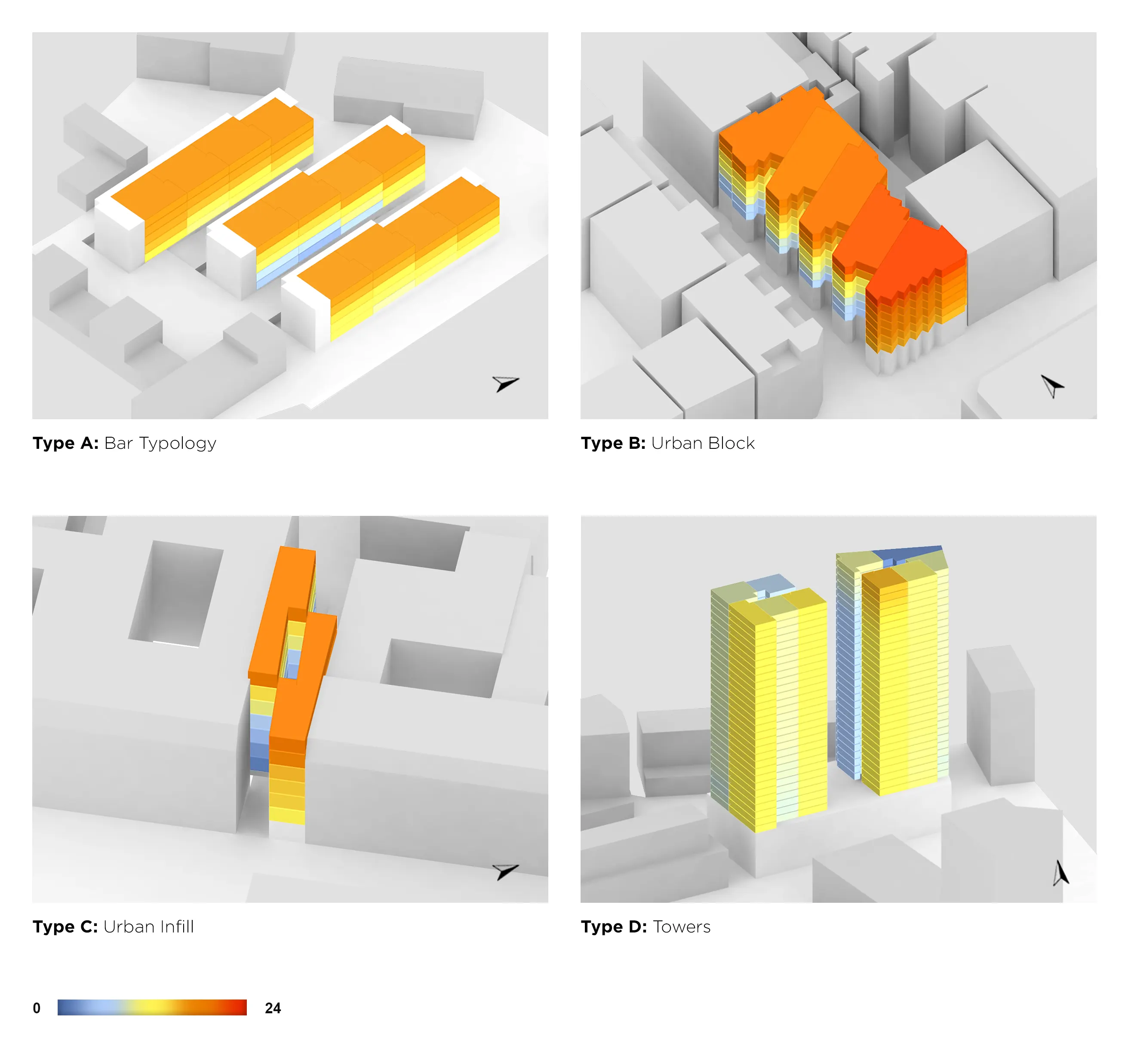Daylight Score
Measure Daylight in Homes
- Credits: Timur Dogan, Ye Chan (Daniel) Park
- Date: Nov 2016 - Ongoing
- Link: Link to the paper
Current climate-based daylighting metrics are optimized for evaluating office and classroom spaces and have limited applicability for residential spaces; they fail to highlight relevant aspects of natural light in residential architecture, such as the diurnal and seasonal availability of daylight and access to direct sunlight. The Residential Daylight Score (RDS) is a new climate-based, annual methodology that quantifies daylight autonomy and access to direct light in temperate and cold climates. Diurnal and seasonal timebins are introduced to highlight specifically when undersupply occurs.
Scores based on these assessments can be used to objectively compare the daylighting performance of different apartment units. Several methods of visualization are possible: Spatial maps representing daylight autonomy and access to direct light can be overlaid on plans of apartment units and floors, while false-color volumes representing final scores can be used for the building- and urban-levels. The researchers are currently studying the effects of direct light on building energy demand, occupant thermal comfort, and occupant visual comfort in an effort to re-calibrate the recommended thresholds for access to direct light and thereby make the RDS relevant for hot and humid climates as well.

